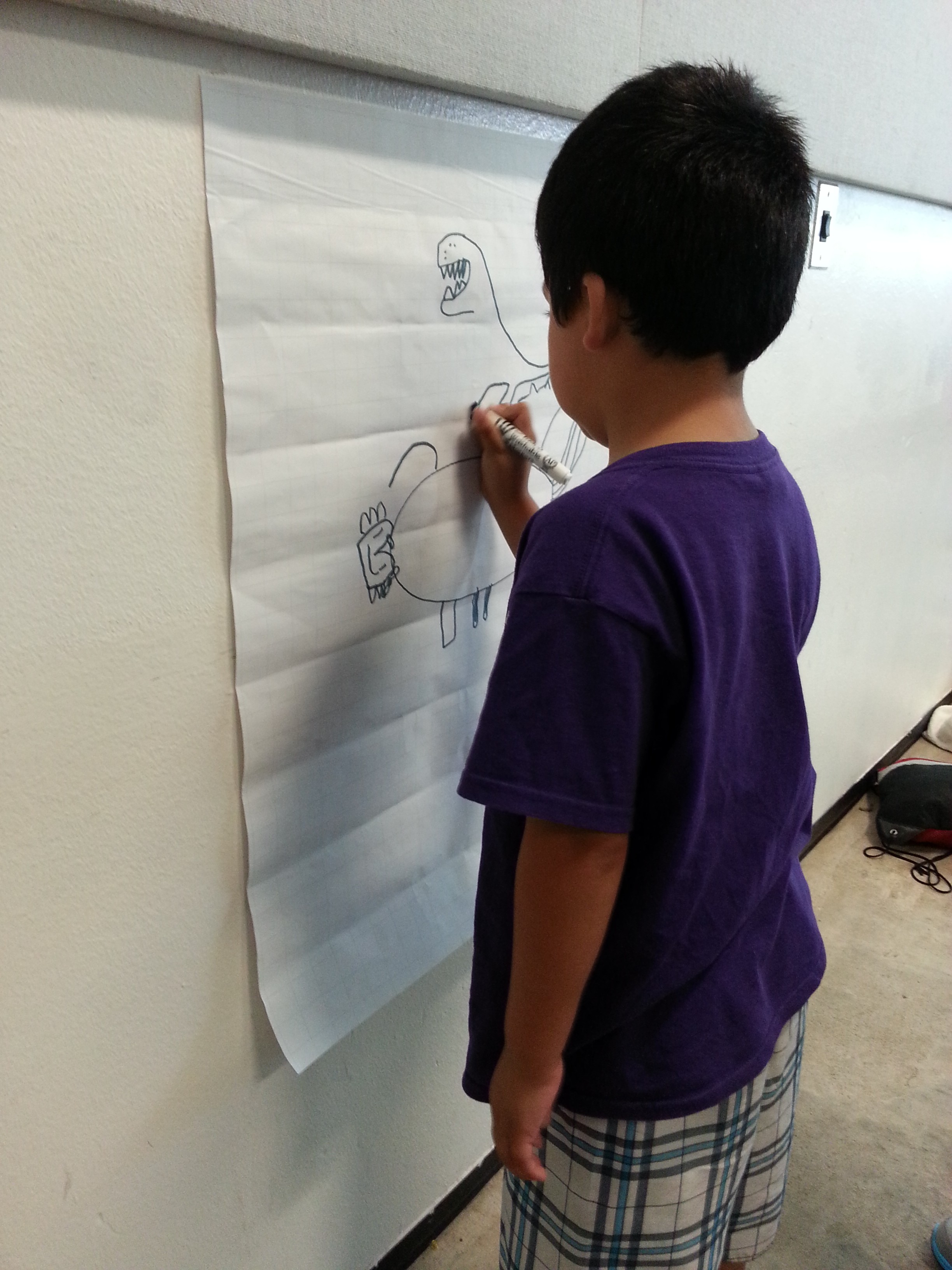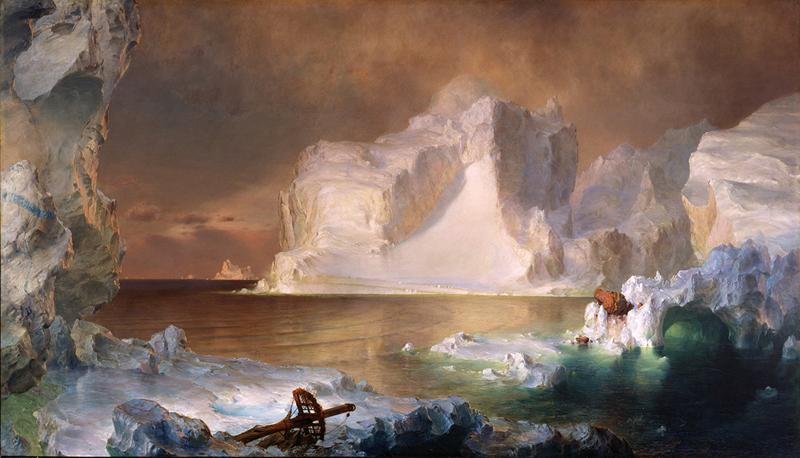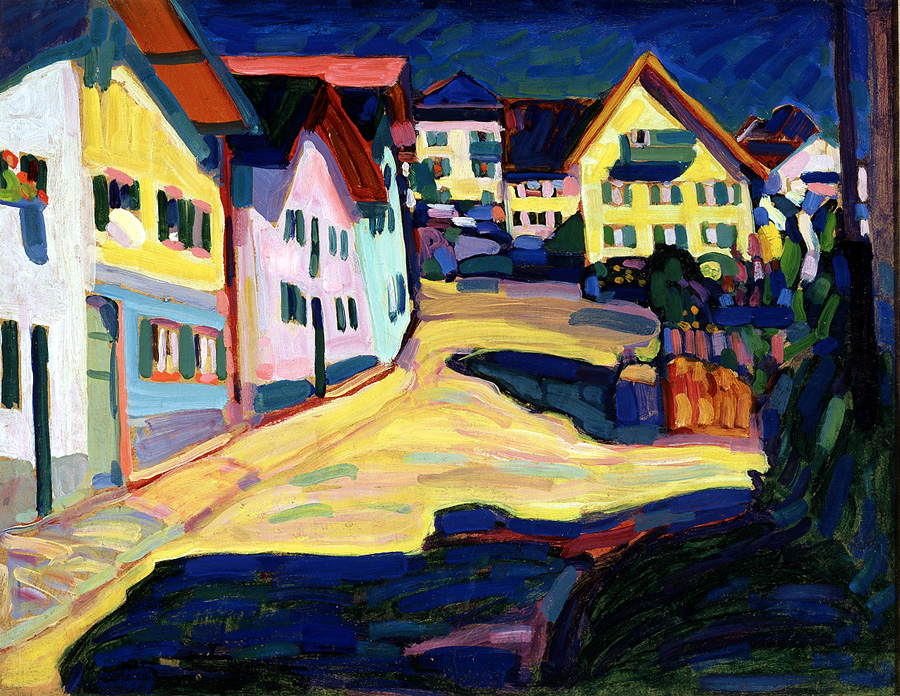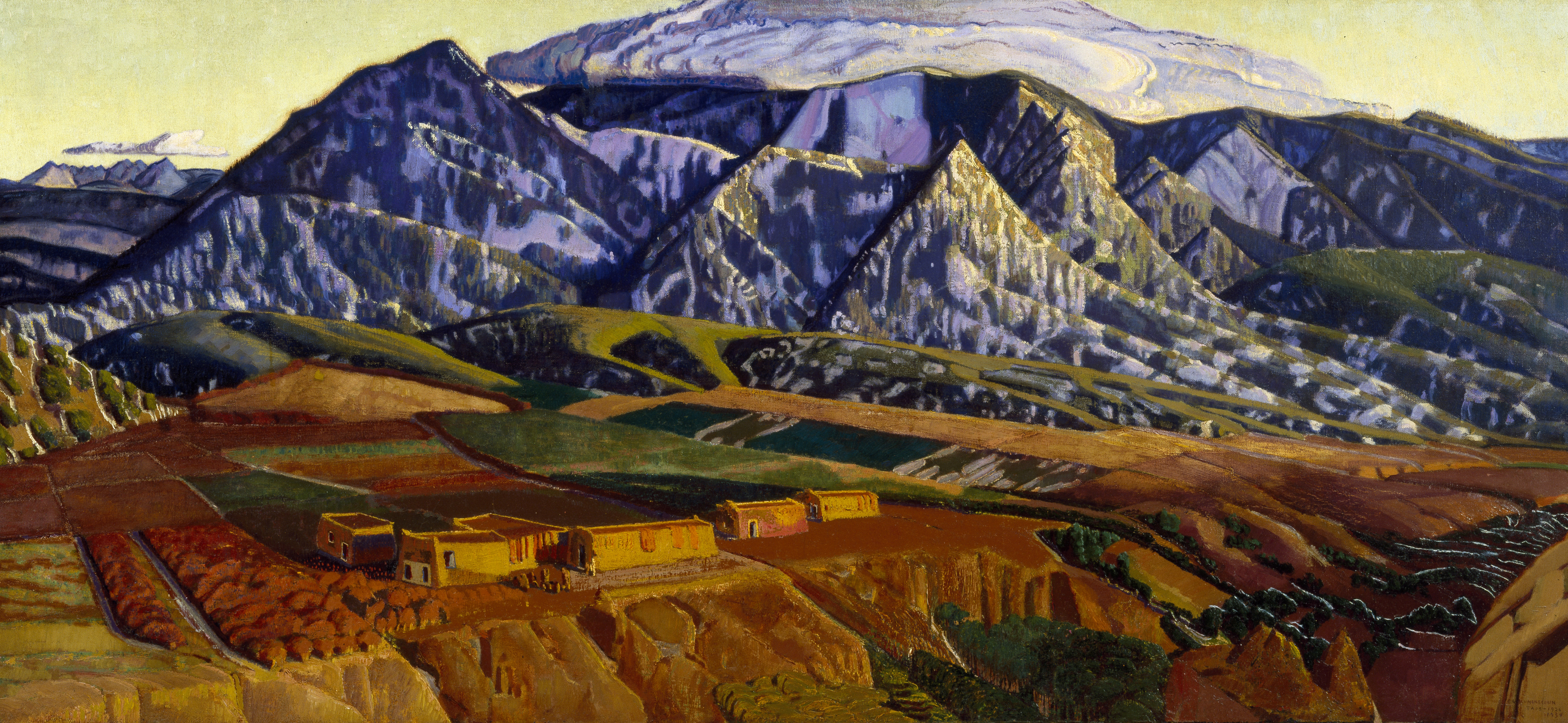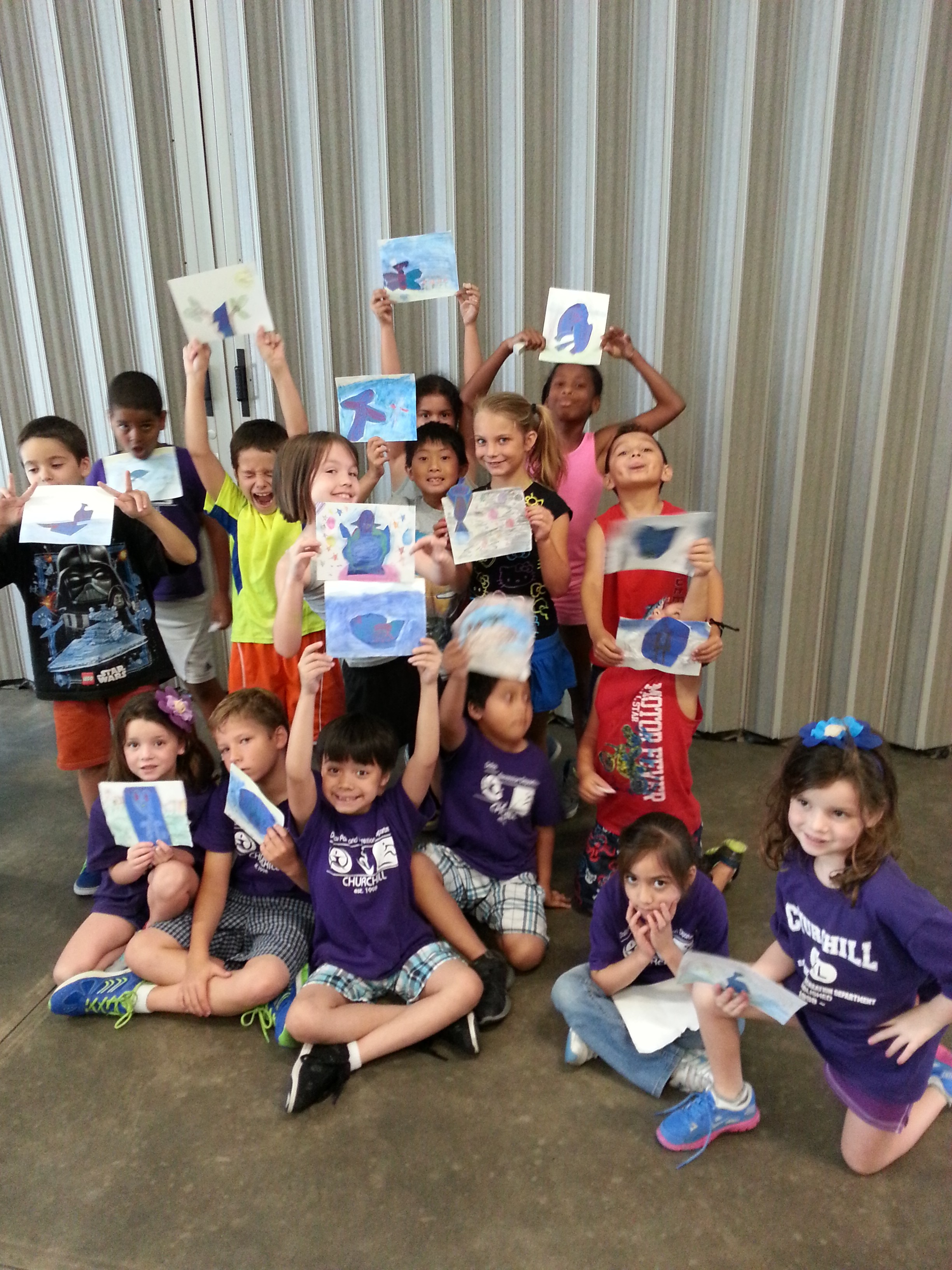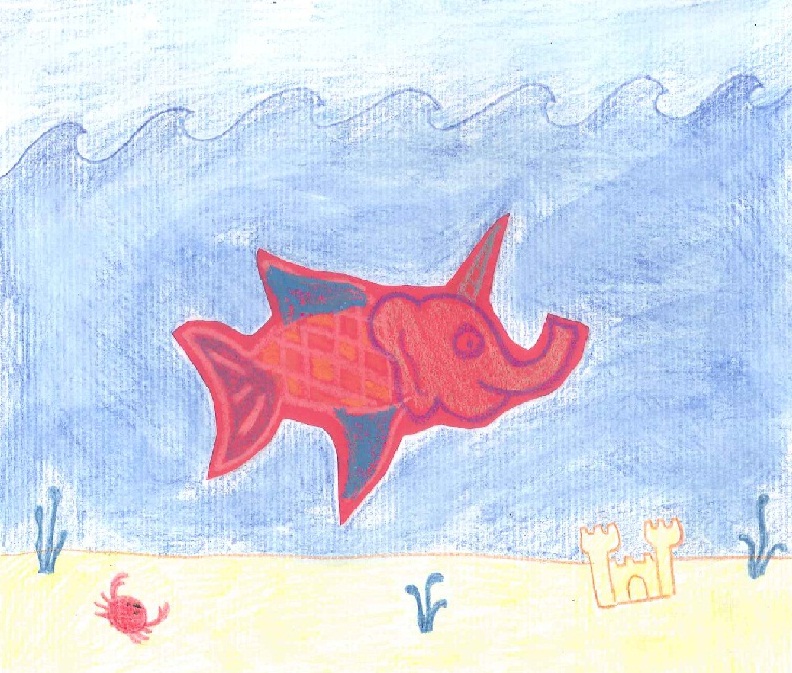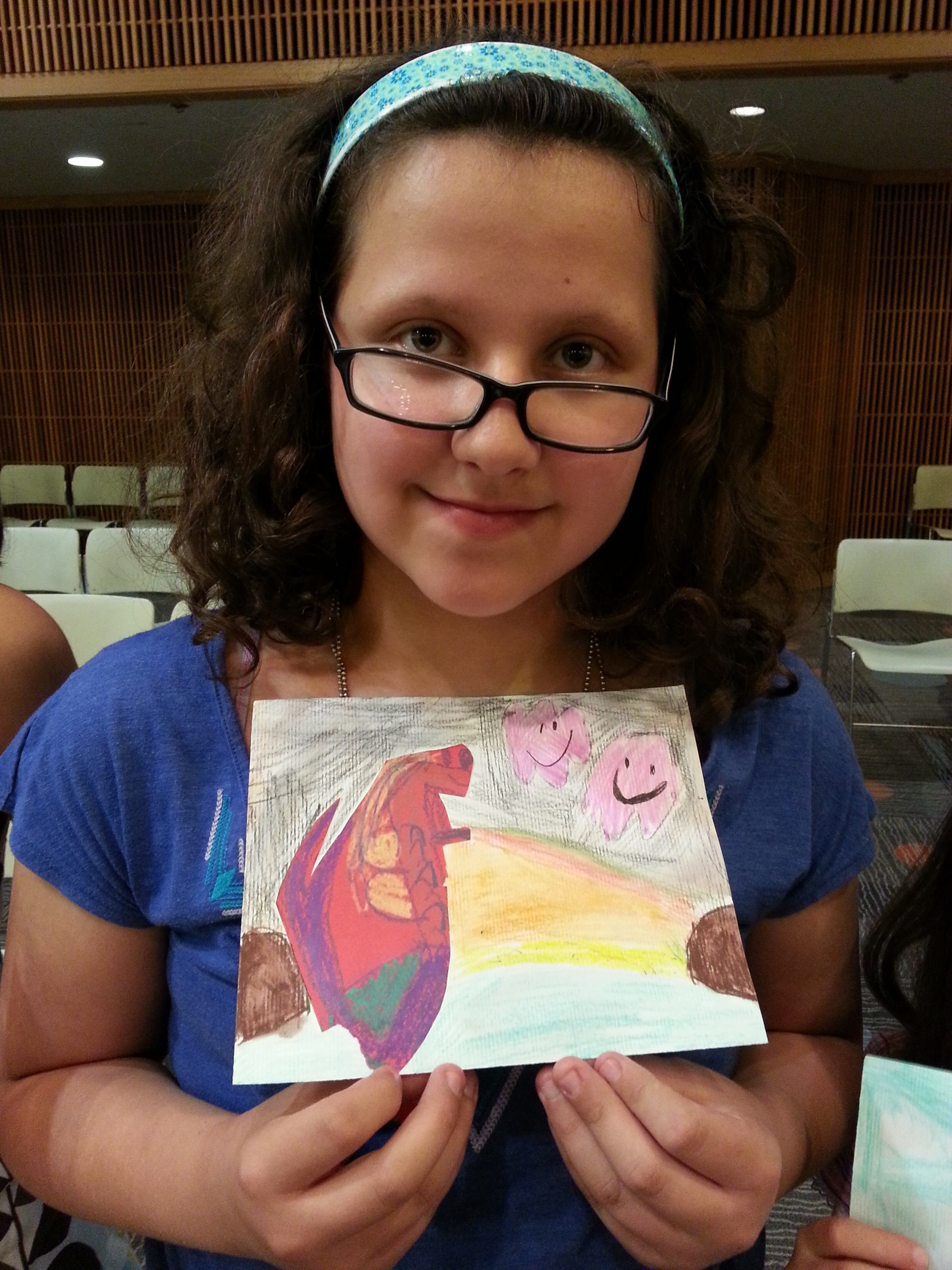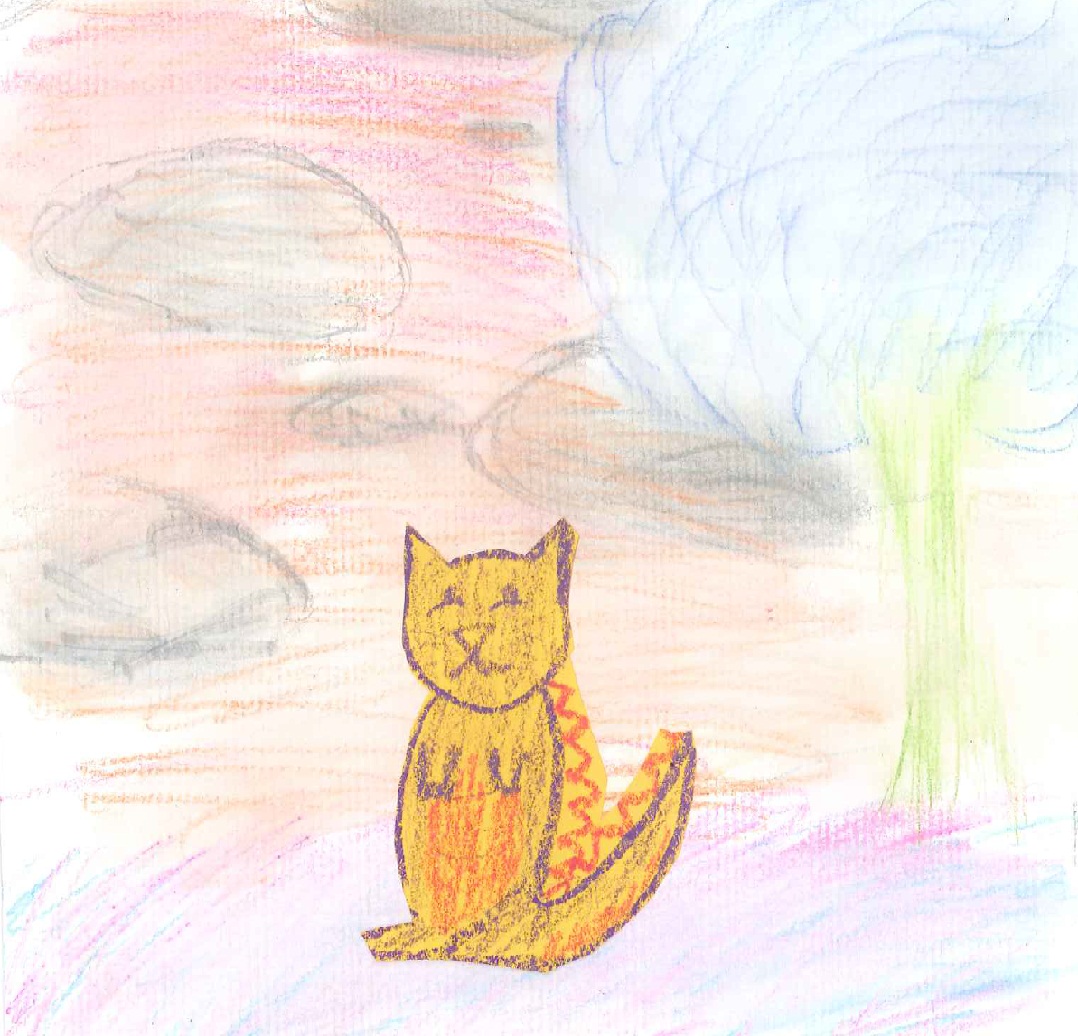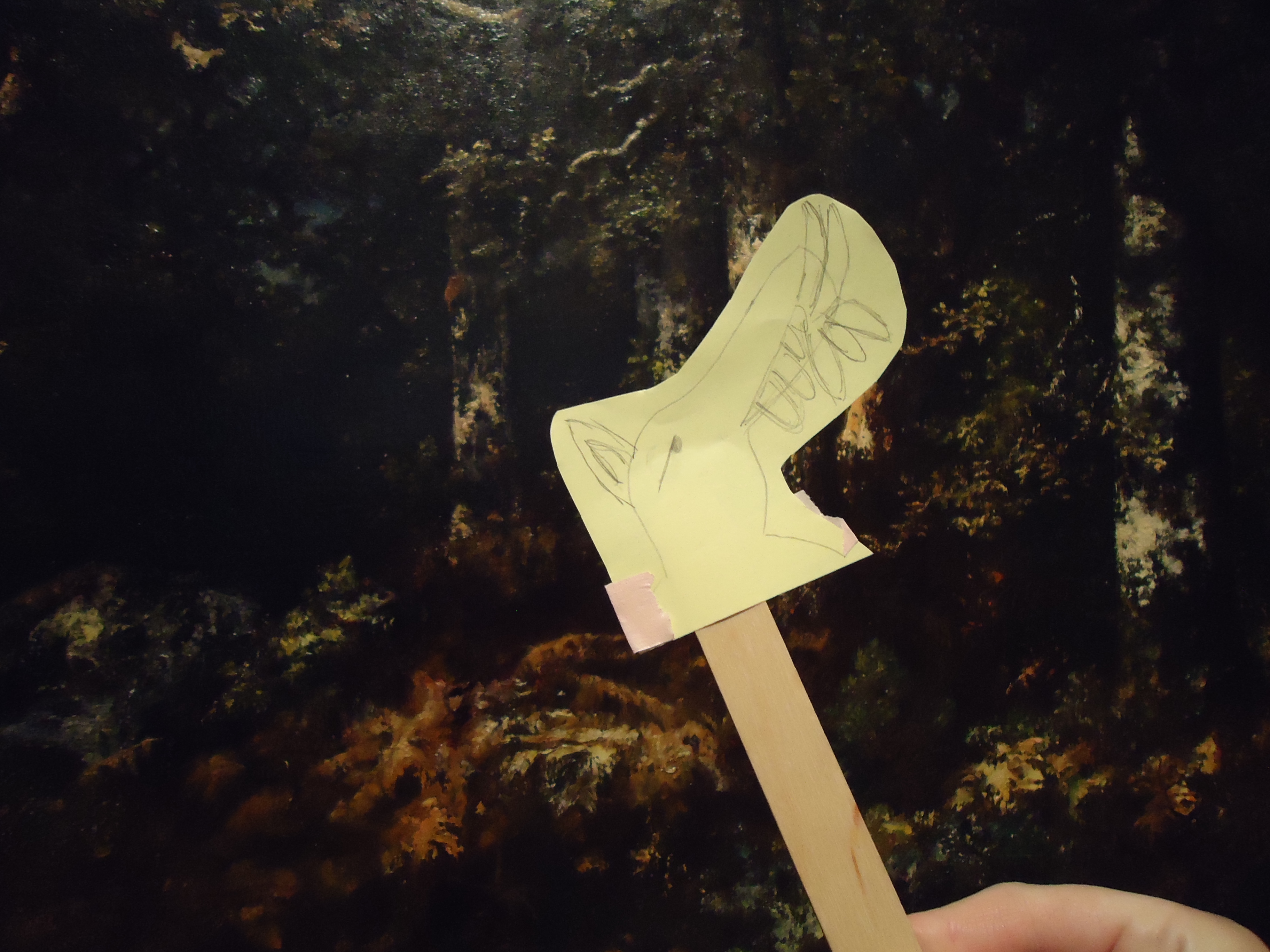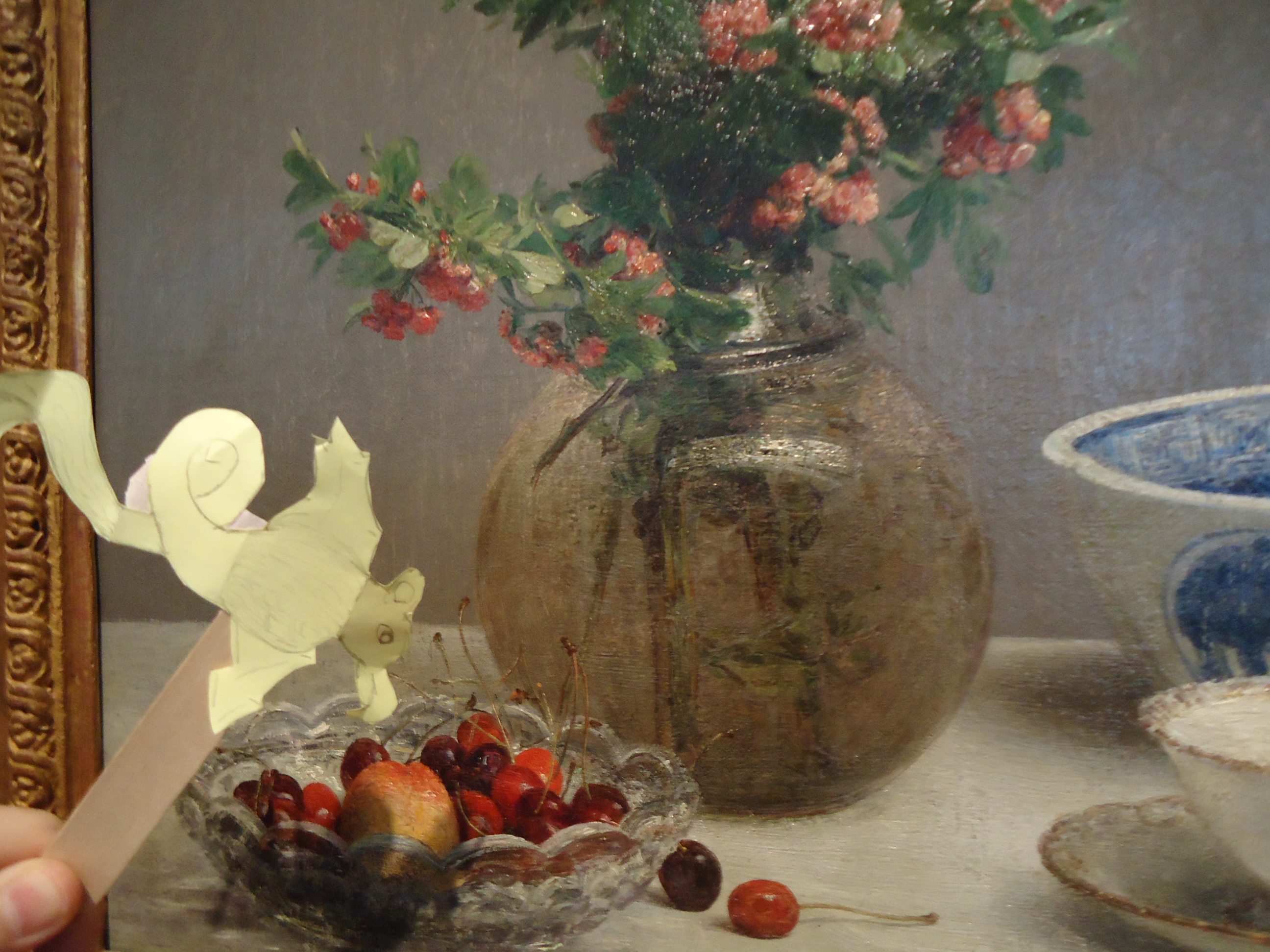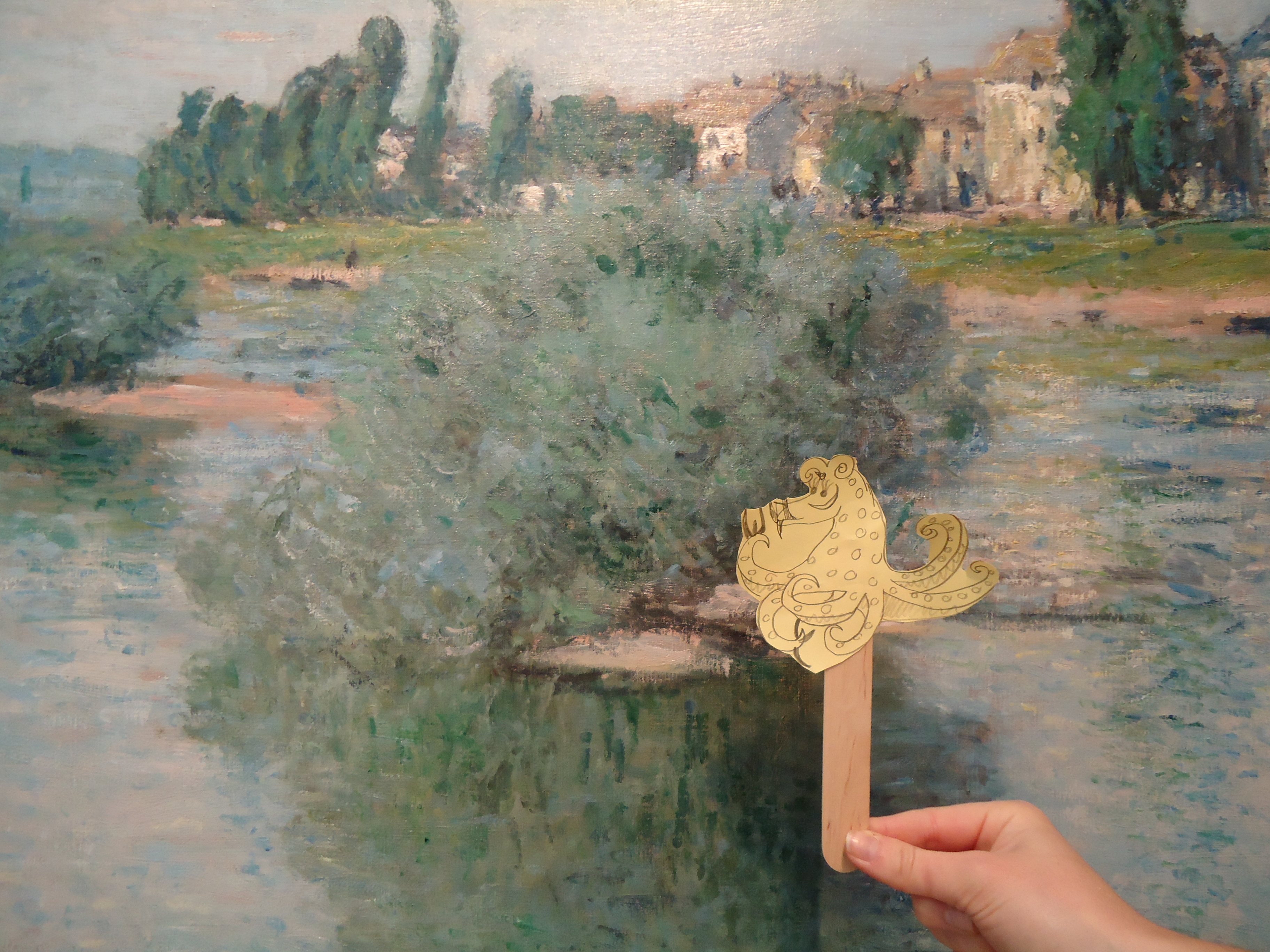Imaginary Worlds, one of this summer’s Go van Gogh outreach programs for younger audiences, is all about the imaginary and the make-believe, or as one student told me today,”the ideas that come from my brain that maybe NOBODY has seen before.” The program, inspired by a fantastical painting by Laura Owens, asks students to dream up creatures and worlds for them to inhabit. Go van Gogh staff has enjoyed having our imaginations expand as we’ve encountered super-creative artists make things like butterfly-ant-lion-bugs, uni-chick-a-sauruses, and grumpy horned snorkaks (snorkling yaks, maybe?). Below are the steps to our project, the DMA artworks that inspired us, and some really great creations.
One Big Imaginary Animal!: We start the program with a quick collaborative drawing to spark imagination and get everyone thinking about animals. Volunteers stick a large Post-It on the wall, draw an oval “body” shape for an animal, and invite students to each add just one different part to the animal. Sometimes we stop to think about our favorite animals and the parts they might have—like beaks, wings, antennae, tusks, trunks, fins, curly tails, fluffy manes, and slimy bodies. We encourage students to be silly together and dream up something they’ve never seen before, and we’re always impressed by how well they take that direction!
Exploring Different Worlds: After making an animal together, students make one of their own. It’s then time to think about places for the animal to live. To get inspiration, we explore landscapes from the Museum’s collection, discussing features of each landscape, the weather and vegetation we see, and what kinds of animals might be best suited to live in each place.
Creating Imaginary Worlds: Armed with lots of great ideas, students bring to life a world for their animal. Using watercolor pencils to draw their worlds, students add imaginary vegetation, imaginary weather, imaginary food, and most importantly, imaginary friends for their animals. In the final step of the project, we use wet sponges to add water to our watercolor worlds, blending colors to make artworks look fantastical.
Getting Imaginations Ready: Before our summer fun started, Go van Gogh volunteers spent time doing these same activities during a training session at the Museum. As part of a warm-up activity, volunteers drew their own imaginary animals and explored paintings in our European galleries, to find a world their imaginary animal might inhabit. Below are a few of the photos volunteers took of their animals in DMA artwork habitats.
To join Go van Gogh for some imaginary fun at your local library, visit the schedule on our website.
Amy Copeland
Manager of Go van Gogh and Community Teaching Programs
Artworks Shown:
- Ernest Blumenschein, Mountains Near Taos, 1926-1934, Dallas Museum of Art, gift of Helen Blumenschein
- Wassily Kandinsky, Murnau, Burggrabenstrasse 1, 1908, 1908, Dallas Museum of Art, Dallas Art Association Purchase
- Frederic Edwin Church, The Icebergs, 1861, Dallas Museum of Art, gift of Norma and Lamar Hunt
- Claude Monet, The Seine at Lavacourt, 1880, Dallas Museum of Art, Munger Fund
- Henri Fantin-Latour, Still Life with Vase of Hawthorn, Bowl of Cherries, Japanese Bowl, and Cup and Saucer, 1872, Dallas Museum of Art, Foundation for the Arts Collection, Mrs. John B. O’Hara Fund and gift of Mrs. Bruno Graf by exchange
- Narcisse–Virgile Diaz de la Peña, Forest of Fontainebleau, 1868, Dallas Museum of Art, Munger Fund


